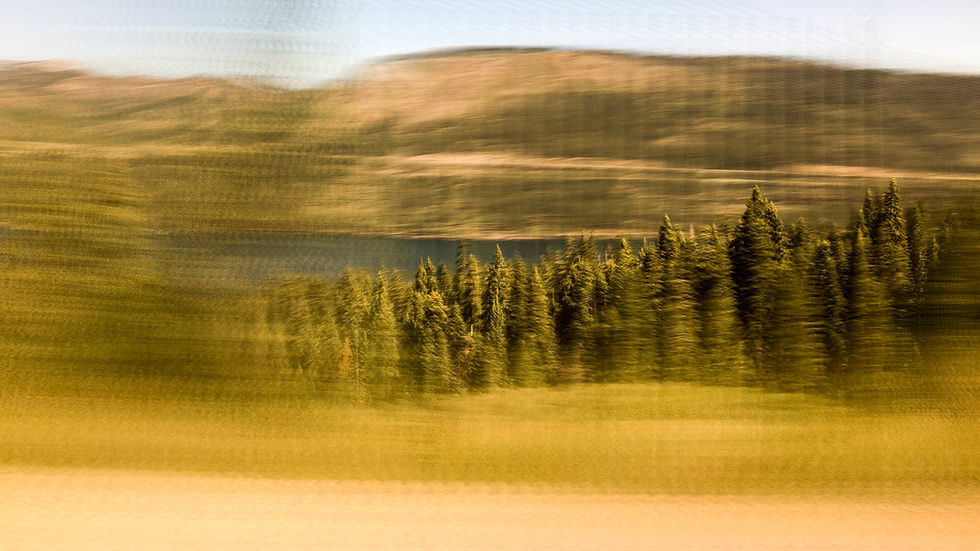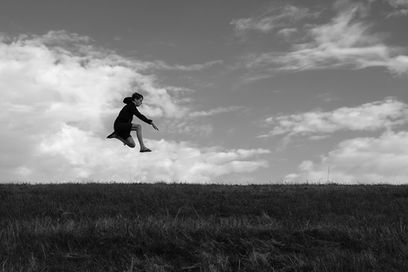
INTERVIEW
April 14, 2022
CREATIVE MOVEMENT
Photography by Maarten Vromans
Interview by Melanie Meggs
Roaming through the urban streets, across rolling hills and over vast oceans, Maarten Vromans uses his lens to document the beauty of the world he travels. From the forgotten corners of society to untouched lands, his photographs are an exploration of the impermanence of time and the transient nature of life. Exploring the borders between residential, commercial and working environments, Maarten’s eye is drawn to the forgotten places, the liminal spaces between different stages of life. His method is one of motion - much like life itself, Maarten’s images appear to capture moments in constant flux; depicting the in-between places that exist as a transition between states. “Movement,” states Maarten, “is always at the heart of my work and methods.” Through his lens, we are invited to witness the quiet stillness of a no-man’s land, where the human presence is absent and only the natural beauty remains. The result is a body of work that is tranquil, abstract and picturesque, yet recognisable in its exploration of place and time. Join Maarten as he ventures into the unknown, exploring the world and all its wonders.

“I simply can’t stop seeing anymore. Or stop framing. Wherever I go, I’m always on the lookout to find suitable locations. I’m on all the time – and I like it.”
IN CONVERSATION WITH MAARTEN VROMANS
THE PICTORIAL LIST: Maarten please tell us what draws you to photography and art? How did your journey into photography begin?
MAARTEN VROMANS: As a child, I was always busy creating things. This could be drawing futuristic cars, building an ever-growing Lego town or redecorating my bedroom – which became an almost weekly exercise. As a teenager, I was planning a career as a painter, photographer or graphic designer. I was admitted to art school, but after only four months of attending classes I switched courses and eventually graduated as a journalist. For the past twenty years I’ve been working as a copywriter and creative in all kinds of organizations.
During this time my interest in painting and graphic design slightly faded, but my ambition to improve my photographic skills became stronger. In 2014, I decided it was time to explore whether my lifelong dream of becoming a photographer and showing my work in a gallery could become reality. When walking through the city of Rotterdam, where I lived from 2001 until 2019, I started working on what would become my URBAN EROSION series, a project in which I explored the impact that people, nature and weather have on urban development. By the end of 2017 the gallery that just started representing me sold my first work during an international art fair in Amsterdam.
Currently, I live in Delft, a small town in the Netherlands. At this very moment I’m working on a monograph of my Urban Erosion series and I’m also creating a special edition box set containing prints from my Urban Erosion² series.
TPL: You state that “movement’ is at the heart of your work and methods”. Describe how this word inspires your projects?
MV: I never work in a studio. I always go out to take photos. And when I do, I’m always on the move.
For my photo series LUCKY SHOTS, and for the successors GO WEST and NO HORIZON, I was travelling by train, taking pictures of the landscapes that I passed by. The results clearly show that I, as a photographer, am moving with a certain speed while taking shots. As such, "movement" is inherent to all the images in these series.
When shooting my series URBAN EROSION and URBAN TRANSITION, I’m always wandering to find perfect locations in the no-man’s land between residential, commercial and working environments. "Moving" through these built-up, cultivated and untouched areas is part of the process of creating these series.
TPL: Your Instagram gallery feels like a visual journey, your passage of time and building memories. Do you see your world differently now, then you did when you first started out in photography? If so, define that new vision.
MV: Thank you for your kind words about my Instagram gallery. Yes, I definitely look at the world differently since I’ve started working on my photo series. I simply can’t stop seeing anymore. Or stop framing. Wherever I go, I’m always on the lookout to find suitable locations for my ongoing ‘URBAN TRANSITION series, the sequel to the URBAN EROSION series. I’m on all the time – and I like it.
TPL: What was the first camera you ever held in your hand, brought to eye, and released a shutter on? What is the camera you use now? Does the equipment you use help you in achieving your vision in your photography?
MV: My parents got me my first camera in 1990. It was an analog point and shoot Fuji FZ-5, with a fixed 35mm lens. I still have it today, although I haven’t used it since 1993. The Fuji didn’t offer me much to learn in terms of controlling a camera. But it did teach me the most important skill I needed as a photographer: how to frame a picture. I’ve switched camera’s a few times since then, until 2018 when I bought a slightly used Sony A7R. I have a Sony 35mm 1.8 lens glued to it. I love the looks of this combination, I’m in full control off it and I’m planning to use it for many years to come.
TPL: What has been your most memorable moment as a photographer?
MV: 😂 In 2018 I was travelling from New York to San Francisco to shoot my GO WEST series. I had prepared that project very well, yet the first 24 hours of my trip turned out to be a total disaster. All the photos I took were disappointing. The batteries of my equipment were dying, due to malfunctioning power outlets in my coach. And my train was delayed for more than three hours, which meant I was in danger of missing my connecting train in Chicago.
I was close to giving up. I phoned my girlfriend back home in the Netherlands and she urged me to carry on. I did and everything changed for the better. I caught my connecting train. Was able to recharge my equipment. And after another day of non-stop travelling, the train drove off into the Rocky Mountains – with me still on it of course. With the landscape that revealed itself from that moment on, I was finally able to create a photo series that stood out from my earlier Lucky Shots project.
Had I given up in Chicago, my ‘Go West’ series would not have existed. I'm also pretty sure I wouldn't have travelled to Switzerland to create the sequel series ‘No Horizon’ in 2019. After successfully completing those photo series, I am convinced that I can also overcome any setbacks when making my future projects.
I don't want to come to a standstill. Movement, in every way, is essential in my work and methods.

TPL: Do you have any favorite photographers you would like to share with us, and the reason for their significance?
MV: Where do I begin? I admire how Awoiska van der Molen, Hiroshi Sugimoto, Misha de Ridder and Teo Becher are capable of capturing the atmosphere of desolate landscapes. And I love how Bert Danckaert, Marleen Sleeuwits, Filip Dujardin and Rowan Hutchinson find beauty in spaces and cities.
TPL: What are some of your most favorite spots you find inspiration to explore through your photography, and what draws you there?
MV: Everywhere I go, I like to visit museums and galleries with a strong focus on photography. Like Huis Marseille in Amsterdam, or the Nederlands Fotomuseum in Rotterdam. I also love to collect small photography booklets brought to the market by small, independent publishers, such as Another Place Press, Café Royal Books, The Modernist, Multi Press or The Velvet Cell. Publications that have landscapes or urbanscapes as their main subject, always attract my attention. I usually discover those small publications at art and photo book fairs.
TPL: Are there any other photographic projects you are working on, or have planned in the near future?
TPL: What are some of your goals as an artist or photographer? Where do you hope to see yourself in five years?
MV: I hope that within five years my work can be on show in one of my favorite museums. I also hope that I can continue to develop as a photographer, by getting started with challenging projects. I don't want to come to a standstill. As said; movement, in every way, is essential in my work and methods.
TPL: “When I am not out photographing, I (like to)…
MV: I still like to play with Lego. And I still love redecorating my living room - driving my girlfriend crazy sometimes. Last but not least I really like to visit remote destinations like Spitsbergen, Greenland and the Faroe Islands.”

Maarten Vromans’ photographs are a powerful reminder of the beauty and impermanence of life. His exploration of liminal spaces and transient moments provide a glimpse of the world between our everyday lives and the unknown. Through his travels, Maarten continues to discover the forgotten corners of our society and capture them in captivating frames. We invite you to explore his work and take a journey through the eyes of Maarten Vromans - to observe the changing landscapes and reflect on our own changing lives.













































